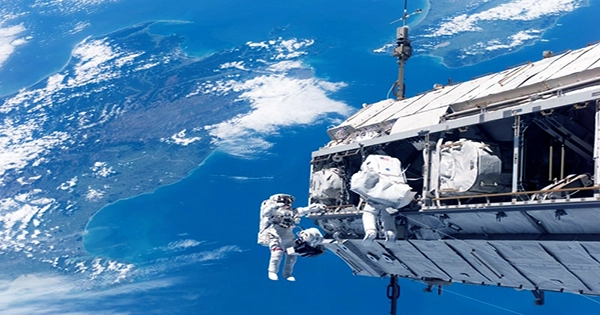One day, patients who require daily medication but do not have access to healthcare could receive extended, adjustable treatment, even on Mars-bound spacecraft, thanks to a novel remotely controlled drug delivery implant.
Such an implant has been created by experts at Houston Methodist Research Institute. To test whether the implant can be operated in space from a device on Earth, they are using the International Space Station (ISS) National Laboratory.
The investigation will create the framework for subsequent tests from the research team using mouse models on the ISS, which will launch on SpaceX’s forthcoming 26th Commercial Resupply Services mission (SpaceX CRS-26). According to Alessandro Grattoni, professor of nanomedicine at Houston Methodist Research Institute, the objective is to increase the implant’s capacity to communicate with Earth and guarantee that the medication delivery mechanism is secure for use by people.
On the ISS, an animal model will be used for the first demonstration of a remotely controlled telemedicine implant. It’s space medicine at its most sci-fi,” Grattoni added. In addition, the implant might offer useful technologies for drug dosage in rodent research trials without requiring astronaut time, according to the researchers.
In order to diffuse a controlled medicine dose, the implant uses nanofluidics technology, which combines membranes with incredibly narrow nanochannels. The research team’s earlier work, funded by the ISS National Lab, looked at fluid flow through nanochannels to design the implant’s capacity to release precise dosages of medication for customized treatment. Grattoni also oversaw an experiment that examined the implantable nanochannel drug delivery system’s capacity to lessen microgravity-caused muscle atrophy in a rodent model.
For the current inquiry, Grattoni and his colleagues will utilize the Faraday Research Facility created by ISS National Lab Commercial Service Provider ProXopS, LLC to evaluate their remotely controlled implant in an automated experiment. In order to serve as a “surrogate animal model,” the implant is submerged in liquid saline and equipped with technology resembling a computer chip. To test several frequencies and see if the implant can precisely administer and alter doses when instructed, the researchers will attempt to operate the implant using Bluetooth and a Blackberry device on Earth.
The investigation’s findings will be a crucial step in developing the implant for use by astronauts who may require safe, automated access to a medication that needs to be taken frequently. The consequences of radiation or prolonged exposure to microgravity in space, for instance, may one day be lessened with the use of a treatment that is now in development.
Radiation exposure is a barrier to sending people to Mars or even the Moon, according to Grattoni. Our technology will be the first that a doctor on Earth might use to instantaneously deliver medication to treat an affected astronaut during a long-term mission. While other preventive measures are being developed to prevent radiation exposure,
Additionally, Grattoni’s team has created implants with several reservoirs that enable the simultaneous dosing of several medications. Even better, the implant can be pre-programmed, making it easier for it to work when communications with Earth are difficult or delayed. By using an application on their smartphone or computer, doctors on Earth will eventually be able to manage drug delivery implants wherever their patients are located—from isolated areas of Earth to far-off space, according to Grattoni.
This is one of more than 20 payloads supported by the ISS National Lab that will be launched on SpaceX-26, which is scheduled to leave the Kennedy Space Center no sooner than November 21 at 4:19 p.m. EST. For additional information on all the SpaceX CRS-26 research sponsored by the ISS National Lab, please visit our launch page.














